August is living up to its reputation as the month when activity in the tropics picks up.
Tropical Storm Dexter is strengthening in the northern Atlantic, and forecasters are keeping a close eye on two systems that could become tropical depressions later this week or over the weekend, according to the latest advisory from the National Hurricane Center.
➤ Weather alerts via text: Sign up to get updates about current storms and weather events by location
One of the disturbances is located a few hundred miles off Florida and the southeastern coast of the United States. It has a 40% chance for development over the next seven days.
Chances have picked up for development of the tropical wave farther east in the Atlantic. It now has a 60% chance for development over the next seven days.
Farther north, Tropical Storm Dexter has strengthened and could approach hurricane strength over the next 48 hours before dissipating later this week.
It's expected to bring an increased risk for increased surf and a medium risk for rip currents to Florida and the Atlantic coast.
The next named storms of the Atlantic hurricane season will be Erin and Fernand.
Here's the latest advisory from the National Hurricane Center as of 8 a.m., Aug. 6:
Where is Tropical Storm Dexter and where is it going?
Location: 405 miles south-southeast of Halifax, Nova Scotia
Maximum sustained winds: 45 mph
Movement: east-northeast at 13 mph
Pressure: 1,003 mb
Next advisory: 11 a.m.
➤ Tropical Storm Dexter: See latest spaghetti models, any Florida impacts
Spaghetti models for Tropical Storm Dexter
Special note about spaghetti models: Illustrations include an array of forecast tools and models, and not all are created equal. The hurricane center uses only the top four or five highest performing models to help make its forecasts.
Will Dexter become a hurricane? Will it threaten Florida?
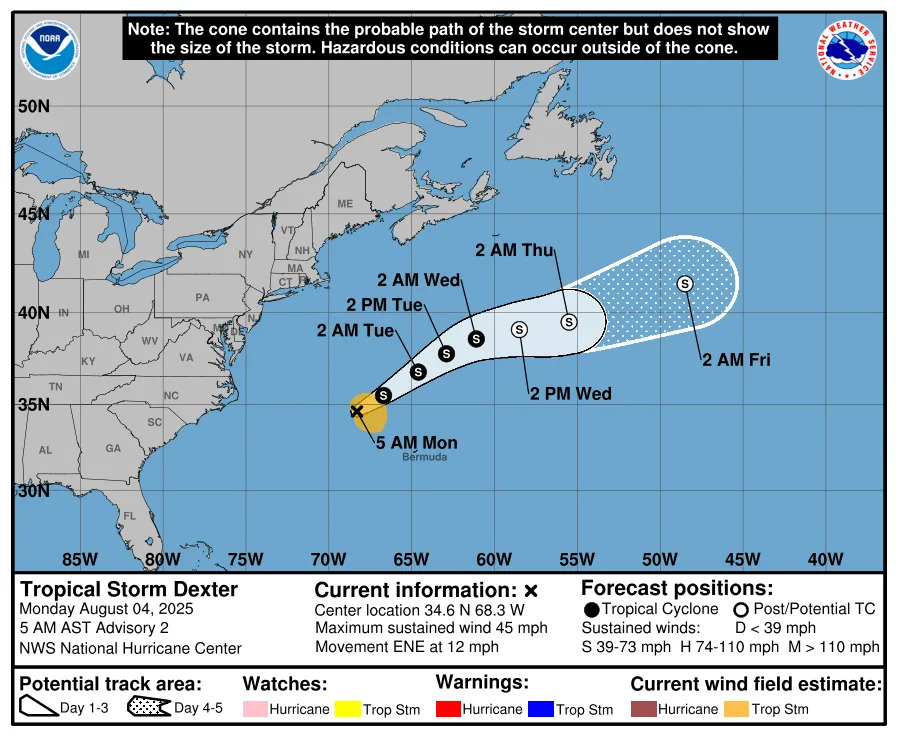
Some models are showing Dexter does have a potential to become a hurricane before it dissipates later this week.
The National Hurricane Center is forecasting maximum sustained winds will reach 70 mph within the next 48 hours, just short of the 74 mph needed to be classified as a hurricane.
While far from Florida, Dexter is expected to bring higher surf conditions of 2 to 4 feet, along with a moderate risk for rip currents, according to the National Weather Service Melbourne.
➤ How often has Florida been impacted, threatened by August hurricanes? We took a look back
"Dexter, along with developing easterly breezes around high pressure near the Northeast states, will create locally rough surf and periodic strong rip currents along the Atlantic coast beaches this week from Florida to Massachusetts," AccuWeather Lead Hurricane Expert Alex DaSilva said.
What tropical waves, disturbances are in Atlantic basin now? How likely are they to strengthen?
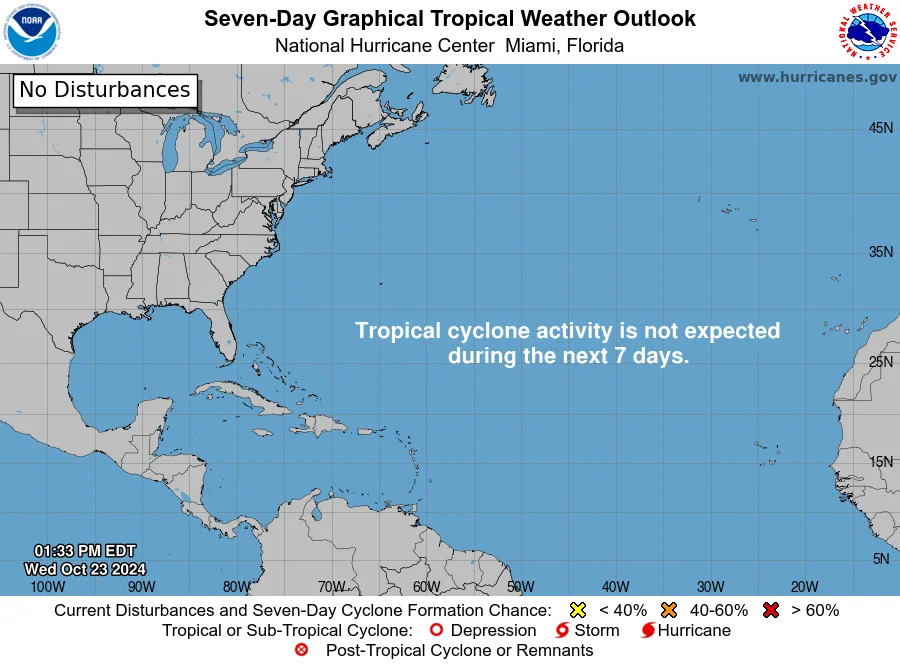
First tropical wave: A weak area of low pressure has formed from a surface trough, several hundred miles off the coast of the southeastern United States. However, this system is currently producing only limited shower and thunderstorm activity and development is likely to be slow to occur during the next few days. Thereafter, environmental conditions could become a little more conducive for development. A tropical depression could still form by this weekend as the low initially drifts westward before turning northward to northeastwardby the weekend.
Formation chance through 48 hours: low, 10 percent.
Formation chance through seven days: medium, 40 percent.
Second tropical wave: A tropical wave over the eastern tropical Atlantic continues to produce a broad area of disorganized showers and thunderstorms. Environmental conditions are forecast to be conducive for gradual development during the next few days, and a tropical depression could form late this week or over the weekend as the system moves generally west-northwestward to northwestward across the central tropical and subtropical Atlantic.
Formation chance through 48 hours: low, 20 percent.
Formation chance through seven days: medium, 60 percent.
How could disturbance off southeast coast affect Florida?
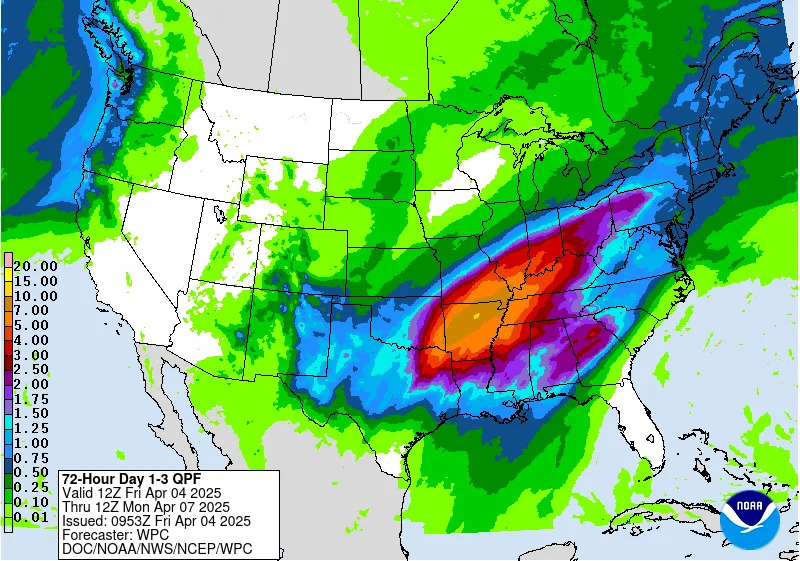
"This system poses no direct threat to Florida at this time," the Florida Department of Emergency Management said.
"However, it could bring elevated rain chances and rip currents along portions of the East Coast later in the week and into the weekend."
The system has a limited time for development, although it could become a tropical depression or storm before the end of the week, according to AccuWeather.
"Heavy rain is expected across parts of the Southeast this week, regardless of official tropical development because of the old front," said AccuWeather Lead Hurricane Expert Alex DaSilva. Downpours and gusty thunderstorms are possible in the Carolinas.
Remember, conditions and forecasts can change rapidly.
If the system strengthens into a tropical storm and moves inland, "a more serious flash flood risk may evolve in portions of the Carolinas, Georgia and Virginia," according to AccuWeather.
Is there a hurricane coming toward Florida?
No. A weak surface disturbance is located several hundred miles off the coast of Florida and the Southeast U.S., producing scattered showers and thunderstorms.
An area of low pressure is expected to form from this disturbance over the next day or so, where environmental conditions appear generally favorable for additional development. A tropical depression could form by the latter portion of this week or weekend as the low starts moving slowly westward, but turns more northward by this weekend.
There's a 40% chance of development over the next seven days, according to the latest advisory from the National Hurricane Center.
What do the colored, hatched areas on the NOAA map mean?
The hatched areas on the National Hurricane Center's tropical outlook map indicate "areas where a tropical cyclone — which could be a tropical depression, tropical storm or hurricane — could develop," said National Hurricane Center Deputy Director Jamie Rhome.
The colors make it visibly clear how likely a system could develop, with yellow being low, orange medium, and red high.
The National Hurricane Center generally doesn't issue tropical advisories until there is a named storm, but there is an exception.
"If a system is near land and there is potential for development, the National Hurricane Center won't wait before it issues advisories, even if the system hasn't become an actual storm. This gives residents time to prepare," Rhome said.
What should you do now to prepare for hurricane season?
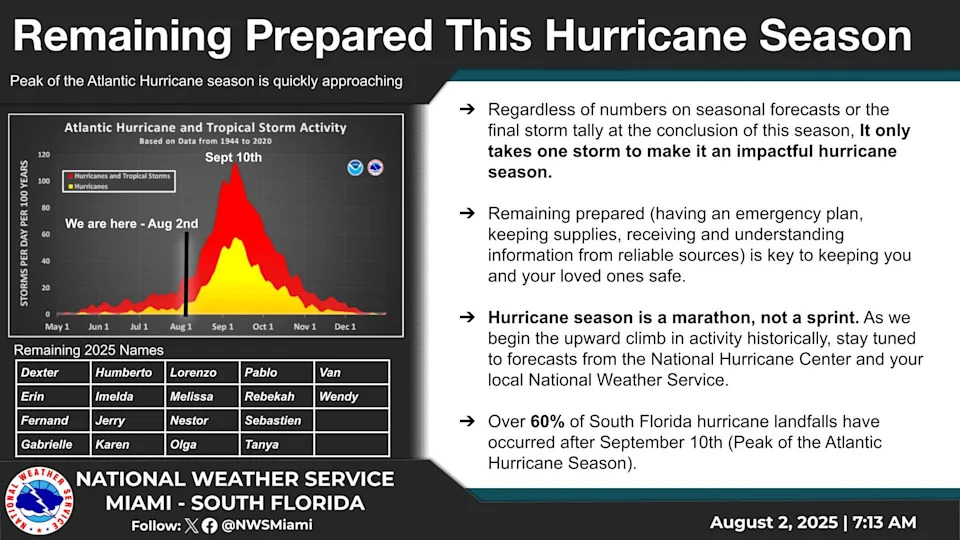
Officials regularly encourage Florida residents to prepare for storms before a hurricane is approaching while shelves are full stocked and you aren't battling crowds all rushing to the store at the same time.
"It only takes one storm to make it an impactful year for your community," the National Hurricane Center Miami posted on X. "Hurricane season is a marathon, not a sprint."
On Aug. 1, specific hurricane supplies became permanently tax free in Florida, ranging from batteries to generators.
➤ See list of emergency supplies you can now buy tax free
Florida weather radar for Aug. 6, 2025
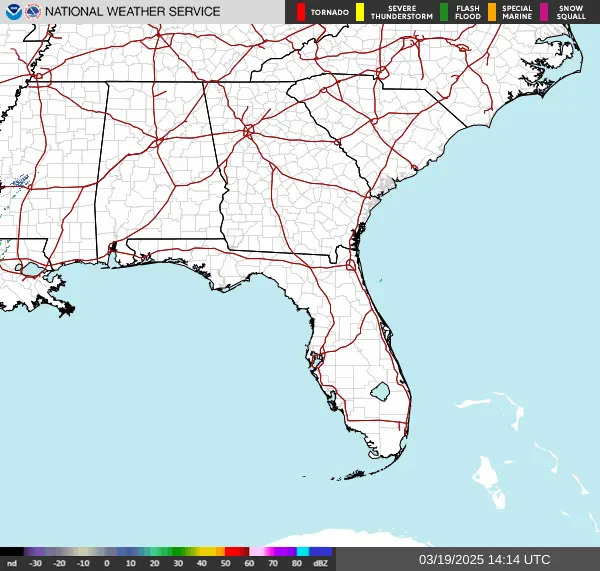
Weather watches and warnings issued in Florida
When is the Atlantic hurricane season?
The Atlantic hurricane season runs from June 1 through Nov. 30.
Ninety-seven percent of tropical cyclone activity occurs during this time period, NOAA said.
The Atlantic basin includes the northern Atlantic Ocean, Caribbean Sea and Gulf of America, as the Gulf of Mexico is now known in the U.S. per an order from President Trump. NOAA and the National Hurricane Center are now using Gulf of America on its maps and in its advisories.
When is the peak of hurricane season?
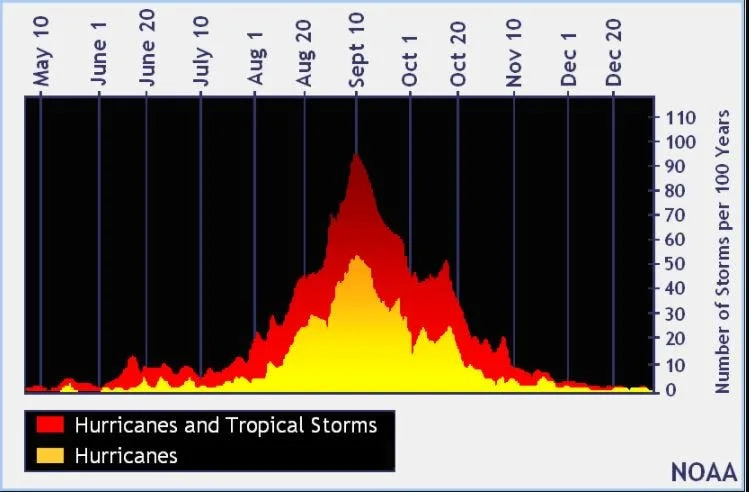
The peak of the season is Sept. 10, with the most activity happening between mid-August and mid-October, according to the Hurricane Center.
Hurricane names for 2025 season
Here are the names for the 2025 Atlantic hurricane season, along with how to pronounce them:
Andrea(June 20)Barry(June 29)Chantal(July 5)Dexter: DEHK-ster (Aug. 3)
Erin: AIR-rin
Fernand: fair-NAHN
Gabrielle: ga-bree-ELL
Humberto: oom-BAIR-toh
Imelda: ee-MEHL-dah
Jerry: JEHR-ee
Karen: KAIR-ren
Lorenzo: loh-REN-zoh
Melissa: meh-LIH-suh
Nestor: NES-tor
Olga: OAL-guh
Pablo: PAHB-lo
Rebekah: reh-BEH-kuh
Sebastien: se-BAS-tee-en
Tanya: TAHN-yuh
Van: van
Wendy: WEN-dee
National Hurricane Center map: See what forecasters watching now
Systems currently being monitored by the National Hurricane Center include:

Interactive map: Hurricanes, tropical storms that have passed near your city
Stay informed. Get weather alerts via text
What's next?
We will update our tropical weather coverage daily.
Download your local site's app to ensure you're always connected to the news. And look for our special subscription offers here.
This article originally appeared on Florida Times-Union: Hurricane Center tracking Tropical Storm Dexter, 2 Atlantic systems

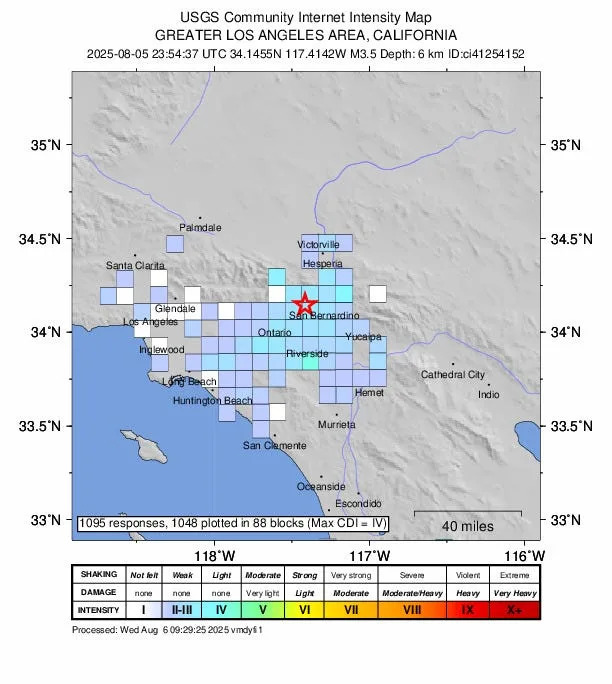

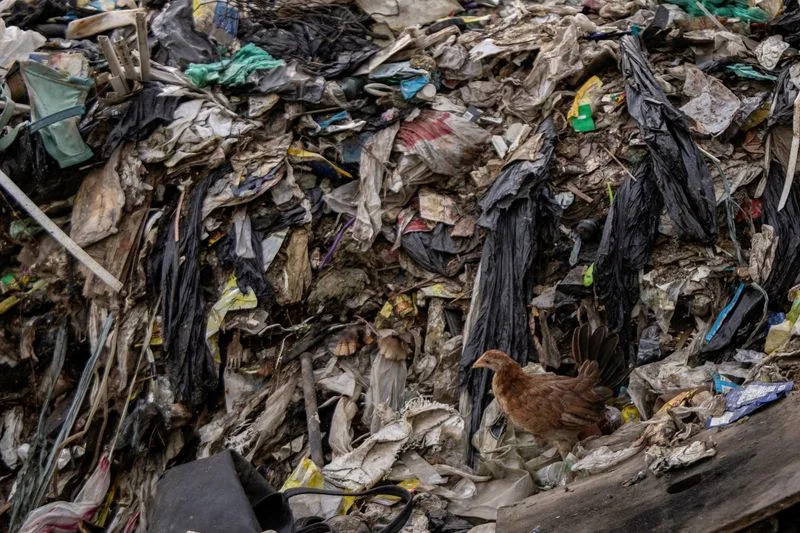


Comments